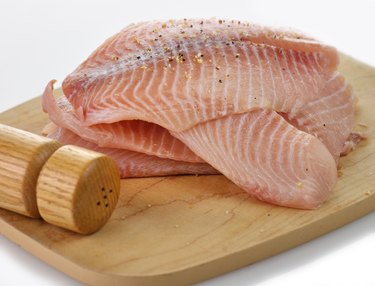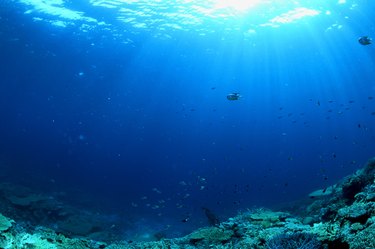
Tilapia and other types of fish can be part of a healthy, balanced diet. Fish is a rich source of protein and heart-healthy omega-3 fatty acids. It is low in saturated fat and provides a number of essential vitamins and minerals. However, some people should limit the amount of fish they eat to reduce their exposure to environmental contaminants.
Concerns
Video of the Day

Mercury is a naturally occurring metal that is converted into methylmercury by bacteria in the ocean and waterways. Nearly all types of seafood contain traces of methylmercury. However, certain fish accumulate methylmercury at extremely high levels. Methylmercury is easily absorbed by the human body and acts as a neurotoxin, interfering with the brain and nervous system.
Video of the Day
Groups at Risk

Mercury exposure may be particularly dangerous to an unborn baby or young child, because the nervous system is still developing. The U.S. Food and Drug Administration and the Environmental Protection Agency advise all women of child-bearing age to avoid high-mercury fish. Pregnant women, nursing mothers and young children should also avoid high-mercury fish and consume only fish and shellfish that are lower in mercury.
Amounts

Fish that accumulate very high levels of methylmercury are generally large, predatory ocean fish near the top of the food chain. Tilapia is a smaller, quick-growing and short-lived fish. As such, tilapia has lower levels of methylmercury than many other fish. People from high-risk groups may safely enjoy two 6-oz. servings of tilapia or other low-mercury fish per week.
Alternatives

Other types of low-methylmercury fish include anchovies, butterfish, catfish, croaker, flounder, haddock, herring, mullet, ocean perch, plaice, salmon, sardines, shad, sole, freshwater trout, whitefish and whiting. Many types of shellfish are low in methylmercury, such as oysters, scallops, shrimp, squid, clam, crab and crawfish. Check with your local health authorities for information about the safety of fish you catch yourself.